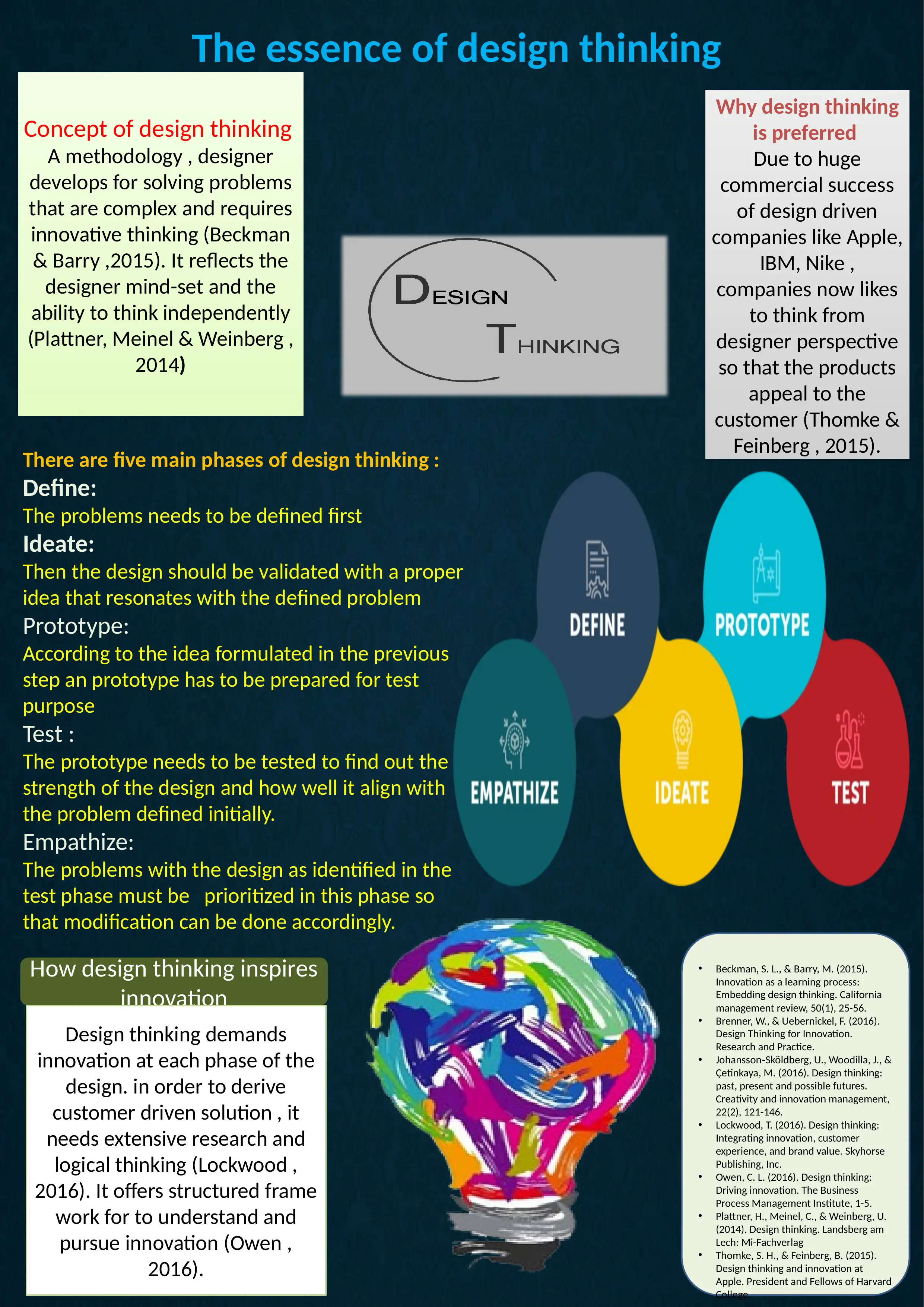Design Thinking: Principles, Process, and Innovation Strategies
VerifiedAdded on 2023/06/10
|1
|459
|421
Report
AI Summary
This report provides a comprehensive overview of design thinking, covering its core concepts, the design process, and its impact on innovation. It begins by explaining the importance of design thinking, highlighting its adoption by companies like Apple and its focus on customer-centric solutions. The report then delves into the five main phases of design thinking: Define, Ideate, Prototype, Test, and Empathize. It emphasizes how each stage contributes to a structured approach for problem-solving and innovation. The report also discusses how design thinking fosters innovation by encouraging research, logical thinking, and a customer-driven approach, providing a framework for understanding and implementing innovation strategies. The report draws on various sources to provide a well-rounded understanding of design thinking in business.





![[object Object]](/_next/static/media/star-bottom.7253800d.svg)